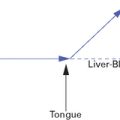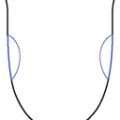 TONGUE-BODY COLOUR
TONGUE-BODY COLOUR
TONGUE-BODY COLOURS
Pale
The Pale tongue is paler than normal. The pallor ranges from a very slight paleness to a paleness so extreme that the tongue is almost white. (See Plate 24.1 on p. P22)
Box 24.1 summarizes the patterns underlying a Pale tongue.
Red
The Red tongue is redder than the normal colour. Although traditionally two shades are described (i.e. Red or Dark-Red), the clinical significance of these two is essentially the same. (See Plate 24.2 on p. P22.)
Box 24.2 summarizes the patterns underlying Red tongue and tongue coating.
The tongue-body may be Red in specific areas, especially the tip, the front third, the centre or the sides. A Red tip of the tongue (Fig. 24.1) indicates Heart-Heat (Full or Empty); if the tip only is Red, this indicates that the condition of Heart-Heat is slight, whereas if the whole tongue is Red and the tip redder it indicates that there is generalized Heat and severe Heart-Heat. (See Plate 24.3 on p. P22.)

Fig. 24.1 Red tip
Red sides all along the edge indicate Liver-Heat (Fig. 24.2, see also Plate 24.4 on p. P22), while a redness on the sides only in the central section indicates either Stomach-Heat or Spleen-Heat (Fig. 24.3).
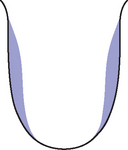
Fig. 24.2 Liver-Heat
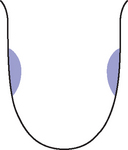
Fig. 24.3 Spleen-Heat
If the tongue is Red in the centre it indicates Stomach-Heat (Fig. 24.4); if it is Red in the front third (including the tip) it indicates Lung-Heat (Fig. 24.5).
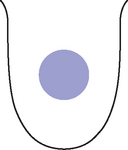
Fig. 24.4 Stomach-Heat
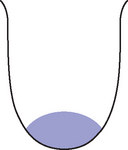
Fig. 24.5 Lung-Heat
Red points
Before defining red points, we should define the red “grains”. Ancient Chinese books on tongue diagnosis say that the physiological Minister Fire ascending to communicate with the Heart forms red grains on the surface of the tongue (bearing in mind that the tongue is the offshoot of the Heart). These red grains are normal and indicate that the physiological Minister Fire is in a healthy state, that is, it is neither excessive nor deficient. When the Minister Fire becomes pathological from various life influences, it flares upwards causing the red grains to become redder and to protrude from the surface of the tongue so that they become more visible: when this happens they are called red “points”. Therefore red points are always pathological and they indicate a pathological state of the Minister Fire flaring upwards. Red points always indicate Heat to a degree greater than when the tongue is just Red. The intensity of their colour and their distribution clearly correlate with the intensity of the Heat: the more intense the colour and the more dense the distribution, the stronger is the Heat. (See Plate 24.5 on p. P22.)
Red points are frequently seen on the tip, sides, centre or root of the tongue. Red points on the tip are relatively common and they indicate Heart-Fire, usually deriving from emotional stress. Red points on the sides in the Liver area indicate Liver-Heat (Liver-Fire), whereas red points in the centre indicate Stomach-Heat (Fig. 24.6). However, Stomach-Heat may also be reflected in red points on the sides but only in the middle section of the tongue and along a broader strip.
With Lung-Heat, red points may appear either in the chest area or in the whole front third of the tongue, as opposed to the very tip as in the case of Heart-Heat (Fig. 24.7).
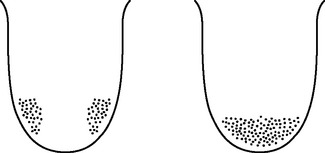
Fig. 24.7 Red points indicating Lung-Heat
Red points on the root indicate Heat, usually Damp-Heat, in the Bladder or Intestines.
Red points in external diseases
The distribution of the red points also reflects the stages of penetration of an external pathogenic factor. In the very beginning stages of an invasion of external Wind, the red points may be more concentrated on the front third or on the sides. In this context, these two areas correspond to the Exterior of the body while the centre of the tongue corresponds to the Interior (Fig. 24.8).
Box 24.3 summarizes the patterns underlying red points on the tongue.
Purple
A Purple tongue always indicates Blood stasis, which itself may derive from Cold or from Heat. (See Plates 24.6, 24.7 and 25.3 on pp. P22, P23 and P24.) Internal Cold contracts and obstructs the circulation of Blood, leading to Blood stasis; Heat leads to Blood stasis by condensing the Body Fluids and Blood. When Blood stasis derives from Cold, the tongue is Bluish-Purple while when it derives from Heat, it is Reddish-Purple. Therefore the Bluish-Purple tongue indicating Cold derives from a Pale tongue while the Reddish-Purple tongue derives from a Red tongue (Fig. 24.9).
The tongue can be only partially Purple and the most common areas are the sides (Liver or chest area) of the tongue, the centre and the front third; the most frequent occurrence is on the sides in the Liver area. Strangely, the tongue is never Purple on the tip only and Blood stasis in the Heart usually manifests in the chest/breast area instead (see below).
A Purple colour on the sides in the Liver area (Fig. 24.10) indicates Blood stasis in the Liver, which may occur in any of the areas influenced by the Liver channel, for example Liver-Blood stasis in the hypochondrium, epigastrium, lower abdomen and Uterus. (See Plate 24.8 on p. P23.) It is interesting to note that, although the Uterus is in the Lower Burner, whose state is reflected in the back third of the tongue, Blood stasis in the Uterus is manifested with a Purple colour not on the root of the tongue but on the sides in the Liver area.
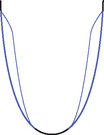
Fig. 24.10 Liver area
A Purple colour on the sides in the chest area (Fig. 24.11) indicates Blood stasis in the chest (which may include Heart or Lungs) or, in women only, the breasts. In lung diseases, a Purple colour in the chest area is seen in chronic obstructive pulmonary disease such as chronic asthma, bronchitis or emphysema. In heart diseases, a Purple colour in the chest area is seen in coronary heart disease. In addition, in women a Purple colour in the chest/breast area may indicate a breast pathology such as breast lumps, whether benign or malignant. Observation of the breast area in women suffering from carcinoma of the breast is an important prognostic factor because if this area is clearly Purple the prognosis is poor, whereas if it is not the prognosis is good. A Purple colour in the breast area is also sometimes seen in women without any breast pathology; this may indicate the predisposition to breast lumps and one should therefore invigorate Blood and eliminate stasis in the breasts even in the absence of symptoms and signs. (See Plate 24.9 on p. P23.)
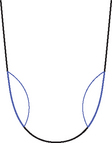
Fig. 24.11 Breast/chest areas
Box 24.4 summarizes patterns underlying Purple tongue areas.
SUBLINGUAL VEINS
The sublingual veins should always form part of a routine examination of the tongue body. Under normal conditions, the two veins under the tongue are barely visible and they have a very faint, pale-red colour. When they become clearly visible, they are by definition pathological. (See Plate 24.10 on p. P23.) One should observe the size and the colour of the sublingual veins.
In modern China, some doctors consider the appearance of sublingual veins as a useful prodromal sign of certain diseases.1 The main signs are as follows:
Boxes 24.5 and 24.6 summarize the conditions underlying sublingual veins in Chinese and Western medicine.

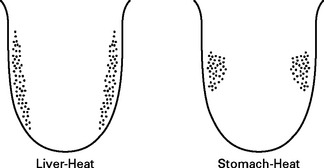
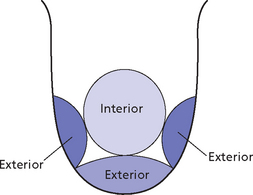
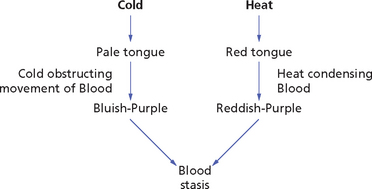
 ). Journal of Chinese Medicine (Zhong Yi Za Zhi
). Journal of Chinese Medicine (Zhong Yi Za Zhi  ) 2000;(12):759.
) 2000;(12):759.